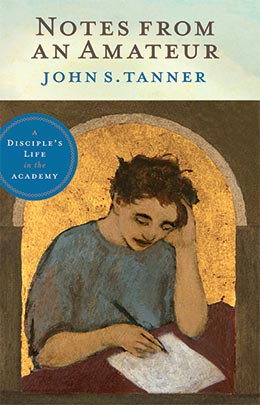Good Friday
John S. Tanner, Notes from an Ameteur: A Disciple’s Life in the Academy (Provo, UT: Religious Studies Center; Salt Lake City: Deseret Book, 2011), 105–7.
The Christian world celebrates this day as Good Friday. Good Friday is a day to remember the Lord’s agony on the cross. Though it recalls a dark hour in human history, this day is called “good” because our salvation was purchased through the suffering commemorated this day. Today will be a workday for me. My calendar is full of appointments. These will leave little time for reflection on the pivotal event at Calvary, apart from this morning’s scripture study and devotional writing.
A better devotional writer than I found himself in similar circumstances on Good Friday nearly four hundred years ago, in his poem “Good Friday, 1613: Riding Westward,” John Donne wrote about a business trip from London to Wales. On Good Friday, he was obligated to ride westward on business while his soul leaned eastward in memory of the suffering of Jesus on the Cross. As a devout high-church Anglican, Donne felt guilty for not being in church on Good Friday, which was a high holy day—a day that was supposed to be dedicated to worship and devotion, not used for either business or pleasure. The predicament of riding westward “when my soul’s form bends toward the east” became a metaphor for his divided nature: one part pulled toward worldly pursuits, the other drawn toward heaven. And it became the occasion of one of the most extraordinary religious lyrics in English.
“Good Friday, 1613” ends with Donne imaginatively traveling eastward in space and time to the foot of the cross. There he imagines what it would be like to look upon the Savior in his agony—and to have Jesus look down at him. This thought causes Donne to wince, turn his gaze away from the cross, and beg the Lord, “O Saviour . . . burn off my rusts, and my deformity, / Restore thine image, so much, by thy grace, / That thou mayst know me, and I’ll turn my face.” [1]
We are all in need of such cleansing and reformation. This needed sanctification is enabled by the sacrifice and suffering of the Savior. When I returned to Brazil on a Fulbright some years ago, I saw a bit of Christian graffiti scrawled on a wall. It read, “Cristo é o sabão”—meaning “Christ is the soap” or “detergent.” He is, as Malachi observed, like fullers’ soap and a refiner’s fire (see Malachi 3:2). “He was bruised for our iniquities . . . ; and with his stripes we are healed” (Isaiah 53:5).
These Good Friday thoughts remind me of an image of the crucifixion captured in one of William Blake’s brilliant illustrations of Paradise Lost. At the end of Paradise Lost, Adam and Eve are taught the gospel by an angel who shows them a vision of the history of the world—to Adam in an open vision, to Eve in a dream. They learn that the apex of human history will be the Atonement, which will allow their posterity to overcome sin and death brought into the world by the Fall. Blake illustrates this vision of salvation history with a picture of an archangel showing Adam a vision of Jesus on the cross. What is most stunning in the image is the bottom of the cross. There we see that the nail which pierces Jesus’ feet also impales the head of the serpent. And on either side of the slain serpent lie the figures of Sin and Death. [2]
What a powerful lesson is figured in this image. The nail that wounds the Savior slays Satan, Sin, and Death for us. This image has been much on my mind of late. I shall try to keep the lesson in mind today as I face again the quotidian cares that so easily distract me from always remembering him, according to my solemn weekly promise at the sacrament.
May you have a good Good Friday and glorious Easter, finding healing and wholeness through him whose death and resurrection make these gifts possible. Remember, the nail that wounded the Savior’s feet also impaled the serpent’s head, enabling us all to overcome sin and death.
Notes
[1] John Donne, “Good Friday, 1613. Riding Westward,” in The Norton Anthology of English Literature, 7th ed. (New York: W. W. Norton & Company, 2000), 1:1273.
[2] William Blake, “Michael Foretells the Crucifixion.”
